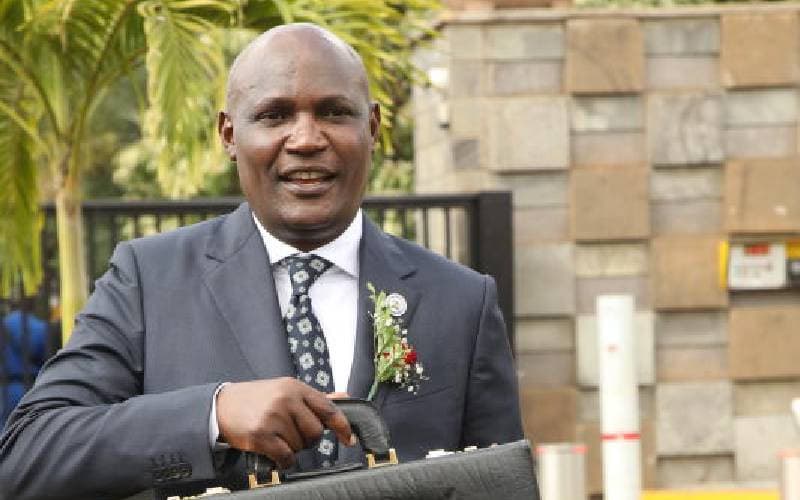We're loading the full news article for you. This includes the article content, images, author information, and related articles.
A new national survey reveals a majority of households saw earnings fall or flatline in the third quarter, squeezing family budgets amid persistent inflation and raising concerns over the country's economic recovery.

A significant majority of Kenyan households reported that their earnings either stagnated or declined in the three months leading up to September 2025, painting a grim picture of the financial realities on the ground. According to the quarterly investor pulse report released on Wednesday, October 29, 2025, by ICEA Lion Group, over half of the 1,000 urban consumers surveyed said their incomes remained unchanged compared to the same period in 2024, marking a record stretch of income stagnation this year. Nearly eight in ten urban Kenyans confirmed their income has either stagnated or fallen, highlighting a stark disconnect between macroeconomic indicators and the daily struggles of citizens.
The report underscores the immense pressure on family budgets, as shrinking or static incomes collide with a persistently high cost of living. One in three respondents noted they were spending more than before, a significant increase from the 25% who reported the same in the previous quarter. This financial squeeze is forcing families to make difficult choices, often cutting back on non-essential spending to afford basic needs.
While the government's official data points to a relatively contained inflation rate, the lived experience for many Kenyans is one of rising costs. The Kenya National Bureau of Statistics (KNBS) reported on September 30, 2025, that the annual inflation rate for September stood at 4.6%. This figure, while within the Central Bank of Kenya's (CBK) target range of 2.5% to 7.5%, is primarily driven by sharp increases in the cost of essentials.
Specifically, the price of food and non-alcoholic beverages rose by 8.4% in the year to September 2025. Transport costs increased by 4.0%, and the index for housing, water, electricity, gas, and other fuels went up by 1.4%. These three categories alone account for over 57% of household expenditure, meaning their price movements disproportionately impact household finances. While there was minor relief in the prices of some staples like sifted maize flour, which decreased by 3.0%, and cooking gas, the cost of other essentials like vegetables, electricity, and rent continued to climb, offsetting any gains.
The strain on household income is occurring against a backdrop of moderated economic growth forecasts. The World Bank, in its June 2025 update, revised Kenya's economic growth projection for the year down to 4.5% from a previous forecast of 5.0%. The lender cited mounting fiscal pressure, sluggish private sector activity, and tighter global financial conditions as key factors. This slowdown limits the creation of well-paying jobs and opportunities for wage growth.
Furthermore, recent fiscal policies, including the Finance Act 2025, are impacting disposable incomes. While the government has framed the legislation as necessary for revenue enhancement, analysts and consumers report that changes to tax relief structures and other levies have increased the effective tax burden on salaried workers, further reducing their take-home pay. Many employees interviewed for the ICEA Lion report cited increased taxes and salary cuts as primary reasons for their hampered earnings.
The economic pressure is not felt equally across all segments of the population. The ICEA Lion survey reveals a growing disparity, with the low-income segment reporting the most significant drop in earnings. Conversely, upper-middle-class and high-income earners were the most likely to have seen their incomes improve over the past year. Geographically, respondents from the agriculturally rich Eldoret region reported the highest income growth, while those in the port city of Mombasa, reliant on tourism and trade, saw a dip.
Kenya's cost of living challenges are part of a broader trend across East Africa, where high inflation and currency pressures have eroded purchasing power. According to the Cost of Living Index by Country 2025 from Numbeo, Kenya ranks as the seventh most expensive country in Eastern Africa, behind nations like Ethiopia, Zambia, and Zimbabwe. While each country faces unique domestic challenges, the entire region is grappling with the aftershocks of global economic volatility.
Despite the current difficulties, the Central Bank of Kenya maintains a cautiously optimistic outlook. In its Market Perceptions Survey for September 2025, the CBK noted that business leaders expect economic activity to strengthen in the final quarter of the year, driven by a resilient services sector, stable macroeconomic environment, and improved agricultural performance. To support economic activity, the CBK's Monetary Policy Committee has continued its easing cycle, lowering the benchmark lending rate to 9.25% at its meeting on October 7, 2025.
However, for the majority of Kenyans whose earnings are not keeping pace with the cost of essentials, this macroeconomic optimism provides little immediate comfort. The widening gap between official economic data and the financial health of households remains a critical challenge for policymakers heading into 2026. Further investigation is required to ascertain the full impact on poverty levels and social welfare.
Keep the conversation in one place—threads here stay linked to the story and in the forums.
Other hot threads
E-sports and Gaming Community in Kenya
Active 7 months ago
Popular Recreational Activities Across Counties
Active 7 months ago
The Role of Technology in Modern Agriculture (AgriTech)
Active 7 months ago
Investing in Youth Sports Development Programs
Active 7 months ago